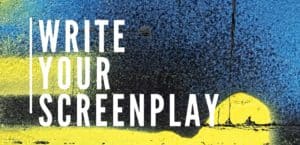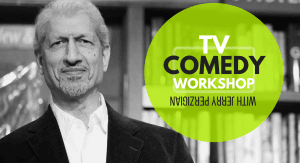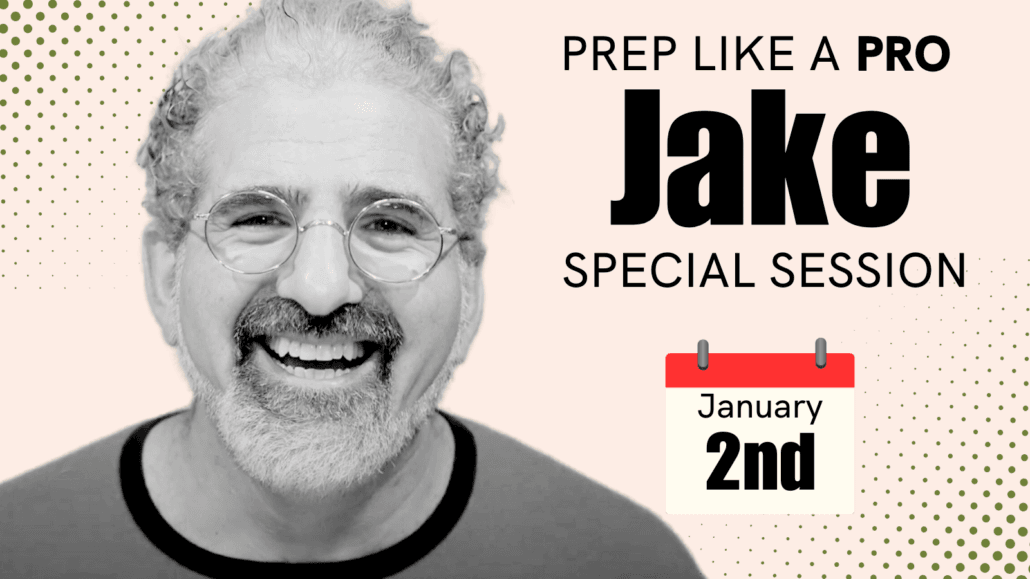Parasite vs. Little Miss Sunshine
In today’s podcast, we’ll be talking about Parasite by Bong Joon-ho. This is such an exciting film to discuss because Bong is a master of tone.
What’s happening with tone in Parasite is really unusual. We’ve seen comedic horror movies filled with horror genre elements, like Scream or Tucker & Dale vs. Evil. We’ve also seen hardcore horror movies like Drag Me to Hell and Friday the 13th slasher films. We’ve even seen elevated horror movies like Hereditary or A Quiet Place, films I’ve talked about on my podcast, which are really complicated character dramas built against a horror landscape.
But what Parasite is doing is much wilder, because Parasite begins like a character-driven comedy and ever so slowly evolves into a horror movie.
We’re going to do a two-part podcast on Parasite. Today, we’ll be looking at the film’s use of tone. In the next podcast, we’ll discuss its theme and structure.
Let’s start by talking about how Parasite accomplished this unique tone. How did Bong build a horror movie that satisfied horror fans in a form that looks more like a Sundance comedy? How did he evolve the horror? How did he make that tone work? To explore that, I want to talk about the connection between tone and genre.
Tone and genre are some of the concepts almost every writer freaks out about. Almost every writer who sets out to write a comedy is afraid it’s not going to be funny enough. Every writer who sets out to write a drama is afraid it’s not going to be dramatic enough. Every writer who sets out to write an action movie is afraid the action isn’t going to be good enough.
It’s important for films to have a feeling of genre because genre is what your audience is actually buying, but how we define genre is complicated.
Back in the old Blockbuster video store days, if you’re old enough to remember them, you’d go to Blockbuster, be looking around for a movie, and not be able to find it. This was back in the ‘80s. So, you’d ask the clerk, “Where’s First Blood?” The clerk would reply, “Oh, it’s in the Drama section.” You’d think, “Hold on. Isn’t First Blood supposed to be in the Action section?” You could never quite find the right genre the film was in because it was hard to break the movie down into the one specific genre it belonged to.
Today, the way genre is defined is much more complicated. If you look at what Netflix is doing, they’ll list a film as “a critically acclaimed, gender-bending movie popular in Williamsburg.” It’s that specific. In fact, what Netflix has actually done, and I don’t have the exact number, but I believe they’ve created 278,000 different tags which can be linked together in any number of combinations to define genre. That’s pretty complicated, right?
How are you supposed to think about genre in your movie when movies like Parasite win an Academy Award and seem to not fit specifically into any genre at all?
So let’s talk about genre; let’s talk about tone. First, I want to give you a way of thinking about genre that might be a little bit different than the way you’ve thought about it before.
Instead of thinking about genre as a category or a combination of 278,000 different tags, I want you to think instead of genre as the overall feeling that the movie gives you.
It’s the feeling you’re craving when you go to watch the movie. It’s like going to a Chinese restaurant because you’re craving Chinese food, or if you go to a Mexican joint, you’re probably really craving some chips and guacamole.
If you go to see The Fast and the Furious, there’s a very specific genre to that film. There’s a feeling you’re craving. The genre isn’t car movies or action movies. Genre isn’t the element; it’s the feeling of all those elements combined.
In fact, I have a podcast on The Fast and the Furious where I talk about what that movie really is. It’s melodrama for men. It’s a soap opera for men. It’s a feeling people will fight for and is why couples have fights when they try to figure out what they’re going to watch on Netflix. They want that genre feeling, and sometimes the genre feeling one person wants doesn’t match what the other person wants.
If you go to see Hereditary or A Quiet Place, you’re going to get the crap scared out of you, but in a way that’s interesting, challenging, and connected to character. If you watch Arrested Development, you’re going to laugh your butt off. However, if you’re watching BoJack Horseman, you’re going to laugh, but you’re also going to cry.
All movies and TV shows have genres. Genre is the feeling, the main feeling, that the project delivers.
If you give the audience that feeling, you can get away with almost anything else. You can get away with a message, with beautiful character-driven elements, with crazy action sequences, with humor in a horror movie or horror in a comedy.
But if you don’t give the audience that feeling, they will eat you alive and for good reason. Because they paid for that feeling, and nobody likes being baited and switched. They paid for that feeling when they bought their movie ticket or their Netflix subscription. They paid for it with their time.
An audience comes to watch your movie, TV show, short film, play, miniseries, or read your book because they want to have a specific feeling. It’s your job as the writer to give it to them.
Now, this is very important. How do you give your audience that feeling? It begins by giving yourself that feeling. It’s not by trying to imagine what some unseen audience is looking for, but by asking yourself what you’re looking for when you write. What’s entertaining to you? What’s moving to you? What’s funny to you? What’s weird to you? What’s the thing you’re curious about exploring?
Genre is the feeling you wanted when you sat down to write. It’s the feeling the audience is craving when they go to see your movie.
This means some people are really going to hate your movie, and some people are going to love it. People get passionate about genre and the feelings they want or don’t want to bring into their lives. The one thing you can trust is that if you write the movie that moves you, guess what? There are probably a lot of other people like you who will also be moved by the film. But if you try to move them, then you’re in trouble. Because you’re not writing anything authentic to you.
What’s so interesting about Parasite is that Bong didn’t even know the ending of the movie when he sat down to write it. In fact, it took him years to figure out what happened at the end. But he was interested in this idea of infiltration. What he did in the movie was give himself that feeling of parasitic infiltration.
Here’s the interesting difference between genre and tone: Genre is the overall feeling, whereas tone can actually be changed and mixed up.
You can get that feeling of infiltration using a comedic tone, as happens at the beginning of Parasite. As we’ll discuss next week in Part 2 of this podcast, you can build your structure out of that.
You can also get the feeling of infiltration using a horror image of the man hidden in the basement. You can get the feeling of infiltration with the family hiding under the table.
Parasite is really just Bong Joon-ho exploring this idea of infiltration he’s interested in, creating that feeling of infiltration, and pushing it as far as he can, further than he could even imagine when he first sat down to write it.
One of the interesting aspects of tone is that you often don’t know your tone until you actually write it.
You think you’re writing a drama and it comes out funny. You think you’re writing a horror movie and it comes out as a drama. You ignore that at your peril, because sometimes the movie wants to be something different from what you expected it to be.
I’ll tell you a funny story from my early writing career. I was in college and had just completed my first play called The Funeral. It was very serious because I was in college and knew I needed to write something very serious. It had to be very important. It was called The Funeral because I had suffered, and I wanted people to know. So, I wrote this play, and it was very, very dark.
We did a reading of the piece. To play the lead, I went to a guy named David Harbour. At that time, David was just a fellow student at Dartmouth whose acting I respected, but he ended up becoming very famous for his role in Stranger Things.
Back in the day, I just knew David as an extraordinary actor who could go darker than dark. He had no limit as to how dark and imposing he could be onstage when he wanted to. I was so excited about having him in the role.
On the day we were supposed to have the reading, an emergency came up and David called me saying he was very sorry, but he couldn’t do it. I scrambled. I didn’t know what to do, but finally found a friend who was available. Jay was a great actor, but he was a comedic actor, a very gifted one. I said, “Jay, I just lost my lead. Can you read my play?” Jay said, “Of course.”
Because nobody in their right mind would ever cast Jay in a dramatic role, since he was a comedic actor, he assumed it was a comedy. And, because I got him at the very last minute, he didn’t have time to prepare or read the script. So, when we did the reading, he played every single line for comedy. You know what he did? He saved the play.
I remember he came up to me afterwards and said, “Oh my God, Jake. I am so sorry. I didn’t realize it was a drama.” I said, “Jay, you saved the play.” He accidentally taught me a technique of tone I hadn’t yet learned as a writer.
I didn’t yet know that tone didn’t have to be the same throughout the whole script. I didn’t know you could actually play with tone.
In fact, by bringing comedy to the piece, by lightening it up at the beginning, he allowed the darkness of where that piece goes to be so much more powerful.
When you start a piece and basically warn the audience, “This is going to be rough,” they’ll kind of tighten in on themselves. Sometimes that’s what you want. If you think of A Quiet Place and how it opens with a child dying, you immediately realize, “Wow, this is going to be rough,” and you tighten in on yourself and feel that tension.
But in other pieces, you can introduce the film by saying, “Hey, come on in; the water’s fine. I know it looks dark, but see how funny it is? See how much fun we’re having?” What happens then is you allow your audience to lower their defenses, open themselves up to the characters, and stop protecting themselves.
This is what BoJack Horseman does so brilliantly. It’s so darn silly and funny that even though they just hurt you a couple episodes ago, you think, “Oh, this is going to be fun.” Then, when they finally come around to the sadness it just knocks you out. So, there are different ways to play with tone.
A movie I just taught in my Write Your Screenplay class is Little Miss Sunshine. In Little Miss Sunshine, they do something completely different with tone that’s also brilliant. 
If you think about the opening sequence of Little Miss Sunshine, even though we’re about to watch a comedy, we really have no idea we’re watching a comedy at all.
In fact, the Little Miss Sunshine title goes right over the face of a depressed, suicidal Steve Carell. This was done on purpose. In the same way that starting a piece off with comedy softens up the audience for drama, sometimes by starting a piece dark it softens up the audience for a comedy.
In Little Miss Sunshine, they give you indicators that you can still have fun. This starts with that first image of the little girl practicing her Miss America moves or the reveal that her dad’s lecture is being given in a room with no people. There are these tiny comedic moments, but, overall, the tone of that opening sequence is of a bleak movie about a dysfunctional family and suicide.
Tone is so interesting because movies, plays, and TV shows can contain a vast array of tones. Tone you can play with and change. Whereas genre is the overall feeling you need to keep hitting.
There’s one other interesting moment I should talk about in Little Miss Sunshine, which occurs right at the very beginning of the second half of the film, or what we call Act Four in a seven act structure. You find out that Grandpa dies and there’s a very, very somber scene. The family is at the hospital, sitting in the waiting room, and the doctor comes out and gives a sad doctor speech, “We did all we could. We just couldn’t save his life.” This scene is played very real; it’s played like drama.
For a moment, it feels like this piece might go off the rails. But then the doctor turns and screams at his receptionist, “Linda!,” Suddenly, we remember we’re in a comedy.
This is another interesting aspect about tone. You can always bring tone around in editing and in rewriting. You can always adjust tone. Sometimes all you need is that one little “Linda!”
The big idea to take away from this podcast is that if you’re worried about tone, the best thing to do is relax and remember that tone can always be adjusted.
Jerry Perzigian, who teaches our TV Comedy classes, says, “First write it true, and then write it funny.” The same is true if you’re writing a drama. First write it true, and then write it dramatic. If you’re writing a horror movie, first write it true, and then make it horrifying.

In your early drafts, as you’re playing with tone, if it comes out not funny or dramatic or horrifying, that’s fine. You’ll find the jokes or the drama or the horror later. If you’re writing something serious and it comes out funny, you just need to add that little bit of darkness. You can find it later.
At the same time, there is a commercial challenge that occurs with tone. This is where people start telling themselves the story of the piece and pitching themselves the piece from the very beginning. You want to send a signal to your reader or viewer that says, “Don’t worry. This may seem different, but you’re in the right place.”
Imagine if Little Miss Sunshine started with that opening, but ended with a murder. You would be horrified and not in a good way. You wouldn’t be winning the Academy Award. You wouldn’t be happy because Little Miss Sunshine isn’t about suicide, death, and murder, even though suicide and death are in it. Little Miss Sunshine is about a family finding each other. It’s about a bunch of losers becoming winners, but not in the way they expected.
Little Miss Sunshine uses a very specific technique to create that feeling for the audience and that’s in the title.
The title, Little Miss Sunshine, reminds us that even though this feels really dark, there’s pressure between what we’re hearing in the title and what we’re seeing on the screen. There’s pressure between Steve Carell’s sad face and the title that reminds you that everything is going to be okay.
Parasite is playing the same game. It’s just playing with darkness instead of light. The title, Parasite, reminds us that this film is going to be really, really dark, even though what we’re initially seeing is really, really funny.
Stay tuned for my next podcast where we’ll talk about exactly how Parasite did that, how they built the structure, how they built the tone, and how they explored it all through a very simple idea called theme.



